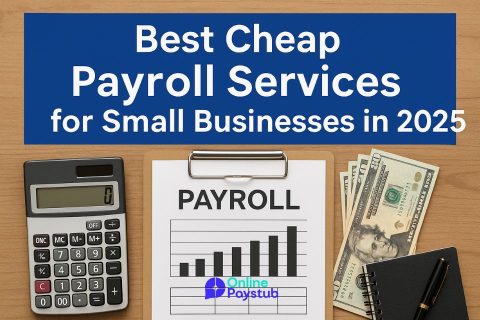A payroll card, also known as a paycard, is a type of prepaid debit card used by employers to pay employee wages. Instead of receiving a paper check or direct deposit into a bank account, an employee’s wages are loaded directly onto the payroll card every payday.
Once loaded, the payroll card functions like any other debit card:
- Employees can withdraw cash at ATMs
- Make purchases in-store or online
- Pay bills electronically
- Check balances via mobile apps or websites
Employers often partner with financial institutions or payroll providers to manage payroll card programs. These cards are particularly useful for unbanked or underbanked employees who may not have access to traditional banking services.
Importantly, employees cannot be forced to use a payroll card. Most state laws require that employers offer at least one alternative, such as direct deposit to a personal bank account or a paper check.
Benefits of Using a Payroll Card
Payroll cards offer several advantages to both employers and employees—especially those without access to a traditional bank account.
For employees:
- Instant access to pay on payday no waiting for checks to clear
- No bank account needed, which is helpful for unbanked or underbanked individuals
- Can be used anywhere debit cards are accepted (online, retail, ATMs)
- Safer than carrying cash, especially in high-risk or mobile job roles
- Mobile-friendly tools: Many payroll card programs come with apps to track balances, spending, and transaction history
- Flexible use: Funds can be used for bill payments, transfers, and savings
For employers:
- Lower administrative costs compared to paper checks
- Faster payroll distribution, especially for remote or offsite employees
- Improved employee satisfaction among those seeking digital, accessible payment solutions
In industries with high turnover or gig-based scheduling like retail, hospitality, and food service payroll cards provide a convenient, scalable payment solution.
Common Fees Associated with Payroll Cards
While payroll cards offer convenience, they often come with various fees that can add up over time if not carefully managed.
Typical fees include:
- Monthly maintenance fee: Charged simply for keeping the card active
- Activation fee: One-time fee for issuing and activating the card
- ATM withdrawal fees: Especially if using an out-of-network ATM
- Balance inquiry fee: Charged when checking your balance at an ATM
- Inactivity fee: Applied if the card isn’t used for a certain period
- Lost/stolen card replacement fee: For issuing a new card
- Reload fee: If you add funds beyond what your employer provides
- Transaction fees: For each swipe or point-of-sale use
- Bill pay fee: Charged when using the card’s platform to pay bills online
Example scenario:
- $2 ATM fee × 4 per month = $8
- $5 cash reload fee
- $2 monthly fee =
Total: $15/month × 12 = $180/year in fees
Many of these fees are avoidable with good planning. For example:
- Use in-network ATMs
- Avoid reloading the card yourself
- Monitor activity via a free mobile app
Before agreeing to a payroll card, read the terms and fee disclosures carefully. Some employers partner with card providers that limit or eliminate common charges, so knowing your options is key to keeping your paycheck intact.
How to Use a Payroll Card Wisely
Payroll cards can be convenient but only if you manage them carefully. Improper use or neglecting to understand the fee structure can result in unnecessary costs.
Tips to use your payroll card smartly:
- Stick to in-network ATMs: Avoid costly withdrawal fees by using ATMs affiliated with your payroll card issuer.
- Read the fee schedule: Every card comes with a disclosure of fees know when charges apply (e.g., inactivity, replacement, balance checks).
- Check balances online: Use mobile apps or websites to monitor activity and avoid ATM balance inquiry fees.
- Set a budget: Track your spending to avoid overuse and reduce the need for reloads or emergency withdrawals.
- Withdraw full wages: If permitted by state law, consider withdrawing your full paycheck fee-free once per pay period and transferring funds elsewhere.
Being proactive about usage keeps more of your paycheck in your pocket.
Are Employers Required to Offer Alternatives to Payroll Cards?
Yes. Employers cannot force you to use a payroll card as your only payment method.
Legal requirements vary by state, but in general:
- Employers must offer at least one alternative, such as:
- Direct deposit to a personal bank account
- Paper check
- Prepaid card of your own choosing
- Consent is key: You must opt in to receiving wages via payroll card. Some states require written authorization.
Tip: If you’re unsure about your rights, check with your state labor department or the U.S. Department of Labor’s wage and hour division.
Who Benefits Most from Paycards?
While anyone can technically use a payroll card, some groups benefit more from having this option.
Most likely to benefit:
- Unbanked or underbanked individuals: Those who don’t have access to traditional checking accounts.
- Gig workers and part-timers: People with non-traditional or inconsistent pay schedules.
- Younger workers: Especially Gen Z and millennials who prefer mobile payment tools and may lack established banking relationships.
- Minority populations: Communities with historically lower access to financial services, where paycards offer an inclusive payment method.
Employers in retail, food service, healthcare, or other shift-based sectors also benefit by reducing payroll costs and increasing payment speed.
Payroll Cards vs Direct Deposit vs Paper Checks
Each wage payment method has its pros and cons. Here’s a quick comparison:
| Feature | Payroll Card | Direct Deposit | Paper Check |
|---|---|---|---|
| Bank account needed | No | Yes | No |
| Speed | Instant on payday | Instant on payday | Delayed (mailing/waiting) |
| Fees | Possible card/ATM fees | Usually none | Possible check-cashing fees |
| Security | Moderate (card loss risk) | High | Low (can be lost/stolen) |
| Mobile convenience | High (card + app) | High (mobile banking) | Low |
| Cash access | ATMs | ATMs and banks | Bank or check-cashing service |
Best for you?
- Choose direct deposit if you have a bank account.
- Use a payroll card if you’re unbanked or prefer mobile spending.
- Avoid paper checks if you want faster, more secure access to funds.
What to Do If Your Payroll Card Is Lost or Stolen
Losing your payroll card can temporarily cut off your access to your wages—but you can recover your funds if you act quickly.
Steps to take:
- Report immediately: Contact the card issuer’s customer service (usually listed on the back of the card or on their website).
- Freeze or deactivate: Most providers allow you to temporarily lock the card via their mobile app.
- Request a replacement: Some providers charge a fee for this; others may offer one free replacement per year.
- Check for unauthorized charges: If you see suspicious activity, report it immediately. You may be protected from liability under the Electronic Fund Transfer Act (EFTA) if you act quickly.
- Track your balance: Monitor your remaining funds to ensure nothing else is withdrawn.
Tip: Write down or save your card number, issuer’s contact info, and PIN in a secure location in case of loss or theft.


No comments to show.